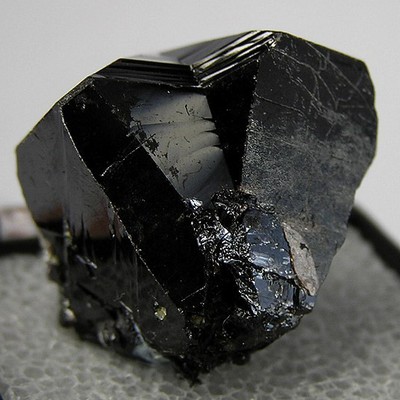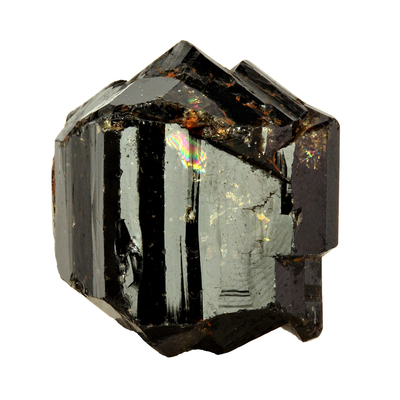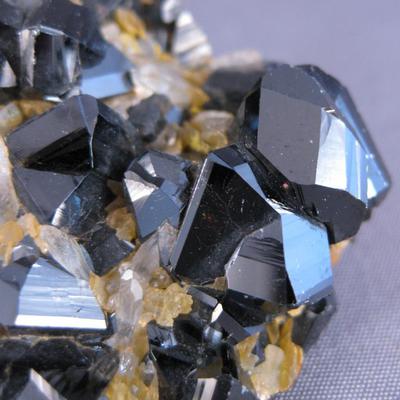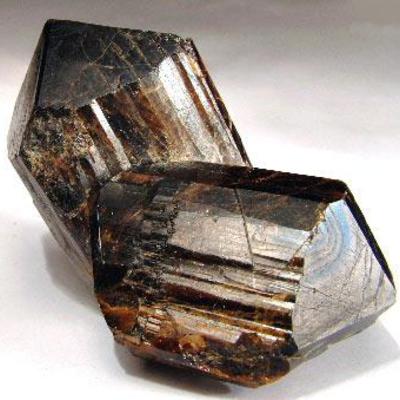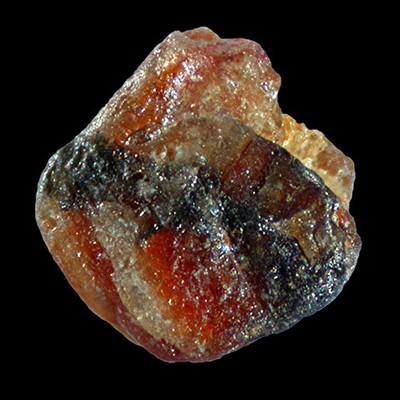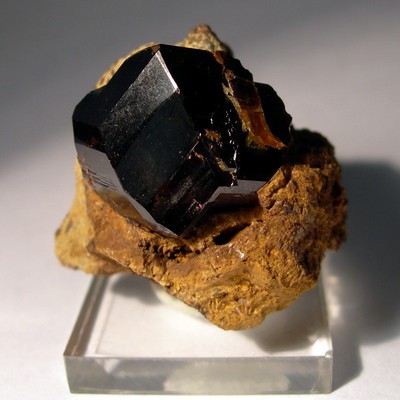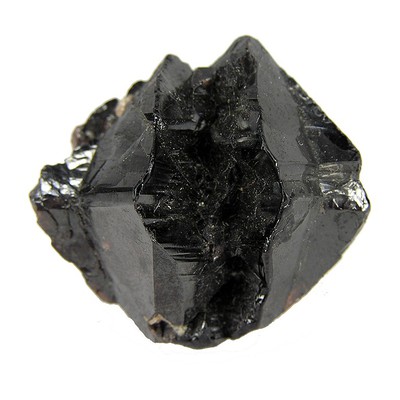Cassiterite

Bolivia
3.50 carats
© Rarestone.com
Facet rough is uncommon but can yield gems of exceptional fire, because of its high lustre and dispersion. With a hardness of 7, approximately the same as that of the quartz gems, cassiterite is occasionally marketed for wearable jewelry in Bolivia ("Andean diamond"), but is normally restricted to rare gem collections.
Although cassiterite is a common mineral, being the main ore of tin, it's crystals are usually black or opaque brown and of no use as a gemstone. Only a few localities yield gem quality material, which ranges from colorless to yellow to pale brown. Bolivia has traditionally been the main source of gem rough, with the Viloco mine there being the only one of Bolivia's 300 or so tin mines that occasionally yields transparent crystals. However in the late 1990s, Russia and China yielded larger transparent crystals than Bolivia. Other sporadic sources of facetting grade cassiterite include Nigeria and Namibia.
The "wood tin" variety of cassiterite is massive, tough, internally micro-fibrous, opaque, and finely colour banded, being related to crystallized cassiterite the same way agate is related to quartz. As with cassiterite crystals, wood tin generally is found in black or brown tones, but it is used for cabochons when it is found (rarely) in more attractive colors like red, pink and creamy white. Mexico and Bolivia are the main source countries for ornamental grades of wood tin.
Cassiterite Gemstones by Colour
This table shows the variety of hues this gemstone can be found in. Click on a photo for more information.
Cassiterite Gemstones by Size
This table shows distribution of Cassiterite gemstone sizes that are listed on this site. This can give a good indication as to the general availability of this gemstone in different sizes.
Contributed photos
Lightest:0.17 cts
Heaviest:63.5 cts
Average:7.66 cts
Total photos:21
Do you have a larger Cassiterite? Why not upload a photo?
| General Information | |||||||||||||||||||||||||||||||
|---|---|---|---|---|---|---|---|---|---|---|---|---|---|---|---|---|---|---|---|---|---|---|---|---|---|---|---|---|---|---|---|
| Varieties/Types: | Wood Tin - A massive variety of Cassiterite displaying coloured bands resembling | ||||||||||||||||||||||||||||||
| Chemical Formula |
| ||||||||||||||||||||||||||||||
| Photos of natural/un-cut material from mindat.org | |||||||||||||||||||||||||||||||
| Physical Properties of Cassiterite | |||||||||||||||||||||||||||||||
| Mohs Hardness | 6 to 7, Blue Chart Gem Identification (2010) More from other references | ||||||||||||||||||||||||||||||
| Specific Gravity | 6.86 to 7.03, Blue Chart Gem Identification (2010) More from other references | ||||||||||||||||||||||||||||||
| Tenacity | Brittle, Gemstones of the world (2001) | ||||||||||||||||||||||||||||||
| Cleavage Quality | Indistinct, Gemstones of the world (2001) More from other references | ||||||||||||||||||||||||||||||
| Fracture | Conchoidal, Gemstones (2009) | ||||||||||||||||||||||||||||||
| Optical Properties of Cassiterite | |||||||||||||||||||||||||||||||
| Refractive Index | 1.990 to 2.105, Blue Chart Gem Identification (2010) More from other references | ||||||||||||||||||||||||||||||
| Optical Character | Uniaxial/+, Blue Chart Gem Identification (2010) More from other references | ||||||||||||||||||||||||||||||
| Birefringence | 0.096 to 0.098, Blue Chart Gem Identification (2010) DoublingMore from other references | ||||||||||||||||||||||||||||||
| Pleochroism | Weak to strong; green-yellow, brown, red-brown, Gemstones of the world (2001) More from other references | ||||||||||||||||||||||||||||||
| Dispersion | 0.071, Gems, Sixth Edition (2006) More from other references | ||||||||||||||||||||||||||||||
| Chatoyancy | Yes, Blue Chart Gem Identification (2010) | ||||||||||||||||||||||||||||||
| Colour | |||||||||||||||||||||||||||||||
| Colour (General) | Common brown color banding, Blue Chart Gem Identification (2010) More from other references | ||||||||||||||||||||||||||||||
| Transparency | Transparent,Translucent,Opaque, Gemmological Tables (2004) More from other references | ||||||||||||||||||||||||||||||
| Lustre | Adamantine, Gems, Sixth Edition (2006) More from other references | ||||||||||||||||||||||||||||||
| Fluorescence & other light emissions | |||||||||||||||||||||||||||||||
| Fluorescence (General) | Inert, Blue Chart Gem Identification (2010) | ||||||||||||||||||||||||||||||
| Crystallography of Cassiterite | |||||||||||||||||||||||||||||||
| Crystal System | Tetragonal, Blue Chart Gem Identification (2010) More from other references | ||||||||||||||||||||||||||||||
| Habit | Forms prismatic crystals characterized by square cross-section and steep pyramidal forms; geniculate twins are common., Gems, Sixth Edition (2006) More from other references | ||||||||||||||||||||||||||||||
| Geological Environment | |||||||||||||||||||||||||||||||
| Where found: | Cassiterite occurs in medium- to high-temperature hydrothermal veins., Gems, Sixth Edition (2006) | ||||||||||||||||||||||||||||||
| Further Information | |||||||||||||||||||||||||||||||
| Mineral information: | Cassiterite information at mindat.org | ||||||||||||||||||||||||||||||
| Significant Gem Localities | |||||||||||||||||||||||||||||||
| |||||||||||||||||||||||||||||||























